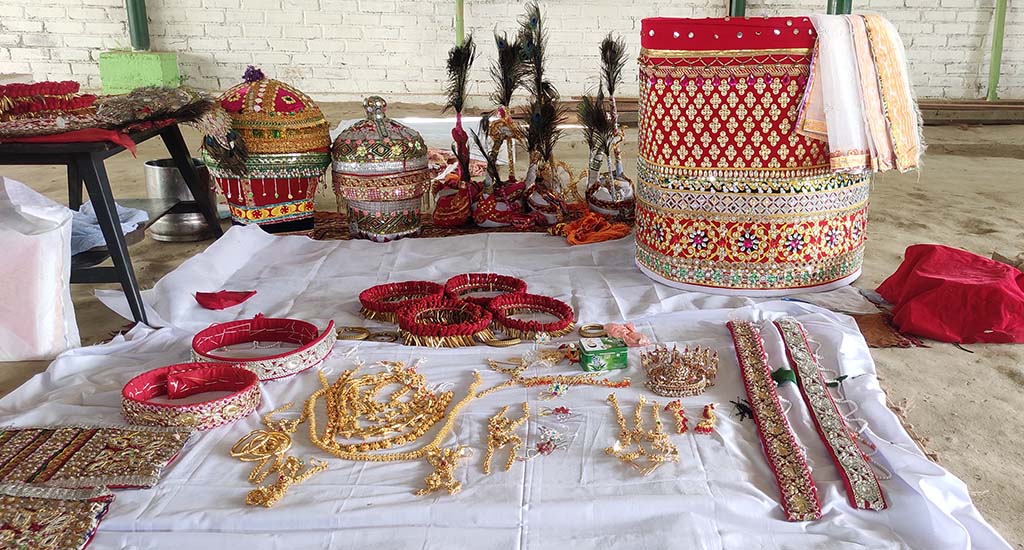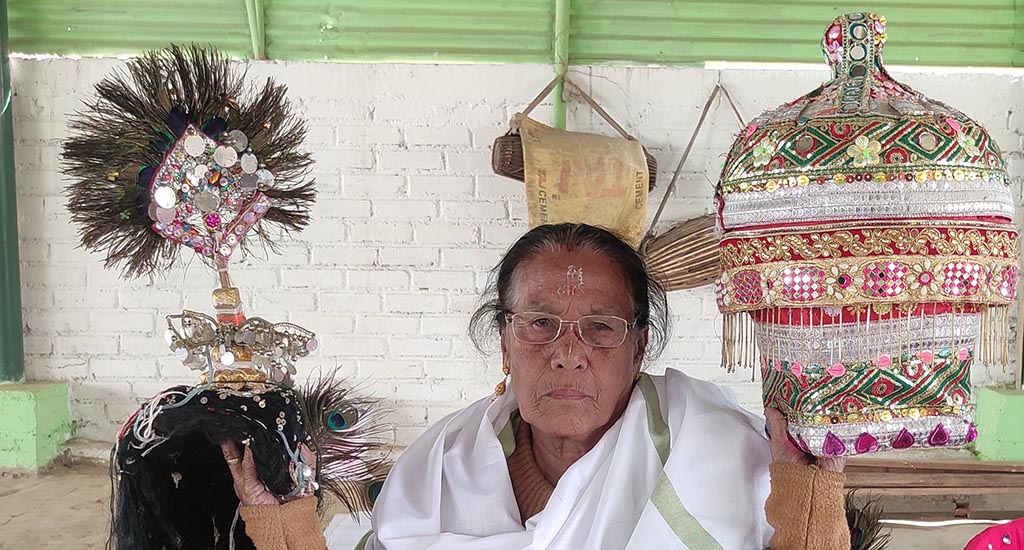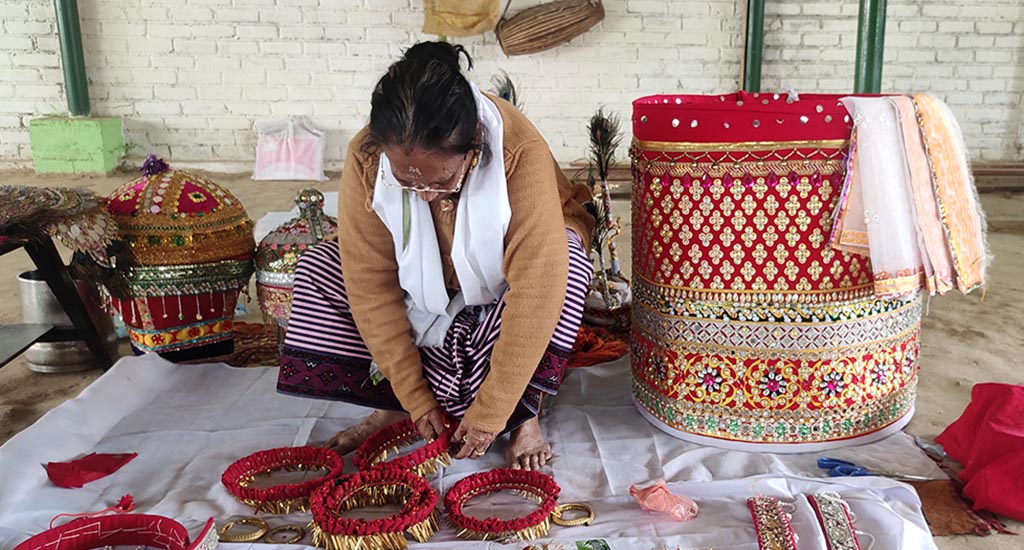I can no longer work with the same vigour because of my age and fading eyesight. My daughters-in-law design the dresses now. Still I work at my leisure time.
I live with my four sons and 24 grandchildren. My eldest son passed away a few years ago.
I’ve trained numerous artisans, who still seek my advice. I’m happy to share my knowledge.
Despite the recognition, for several artisans like me, who toiled to promote Manipur’s culture, it’s a financial struggle. The government should give us a monthly pension during our old age.
Some new designers modify the traditional dresses to make them attractive. I feel we shouldn’t deviate from our age-old culture.
Our culture is rich and has scope for new markets. I wish the next generation will carry on my legacy.




